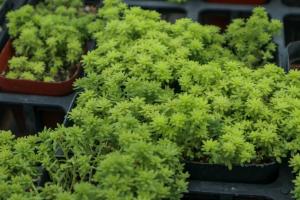Introduction
Plants are living organisms that require water to survive. Water is essential for various plant functions such as photosynthesis, growth, and development. One of the main characteristics of plants is their ability to absorb water and nutrients from the soil. In this science project, we will explore how plants absorb water and the process involved.
The Anatomy of Plants
In order to understand how plants absorb water, we must first understand the anatomy of plants. The roots of the plant are responsible for absorbing water and nutrients from the soil. The root system consists of several parts, including the root tip, root hairs, and root cap. The root tip is the portion of the root that grows and elongates, while the root hairs are responsible for the absorption of water and nutrients. The root cap protects the delicate root tip and helps to guide the root through the soil.
The Process of Water Absorption in Plants
Plants absorb water through the process of osmosis. Osmosis is the movement of water molecules from an area of high concentration to an area of low concentration, across a semi-permeable membrane. The root hairs of the plant contain a membrane that allows water and nutrients to pass through, but keeps larger particles out.
As the concentration of water in the surrounding soil is higher than the concentration of water within the plant, water molecules move into the plant through the root hairs. This movement of water is facilitated by root pressure and capillary action. Root pressure is the upward force exerted by the roots of the plant, which helps to move water through the plant. Capillary action is the movement of water up a narrow tube, caused by the attraction of water molecules to the walls of the tube. Together, these processes help to move water from the soil to the top of the plant.
The Role of Plant Transpiration in Water Absorption
Plant transpiration is the process by which water is lost from the leaves of the plant in the form of water vapor. This loss of water creates a negative pressure within the plant, which draws water up from the roots to replace the lost water. This process is similar to a straw. When you suck on a straw, you create a negative pressure within the straw, which draws the liquid up into your mouth.
Transpiration is an important part of the water absorption process in plants. It helps to create a negative pressure within the plant, which in turn helps to move water up from the roots. The faster the rate of transpiration, the more water is absorbed by the plant.
Conclusion
In conclusion, plants absorb water through the process of osmosis, facilitated by root pressure and capillary action. Plant transpiration plays a crucial role in this process by creating a negative pressure within the plant, which helps to move water up from the roots. Understanding how plants absorb water is important for ensuring the health and growth of plants, both in natural settings and in agricultural practices.

 how many times do yo...
how many times do yo... how many planted tre...
how many planted tre... how many pine trees ...
how many pine trees ... how many pecan trees...
how many pecan trees... how many plants comp...
how many plants comp... how many plants can ...
how many plants can ... how many plants and ...
how many plants and ... how many pepper plan...
how many pepper plan...
































